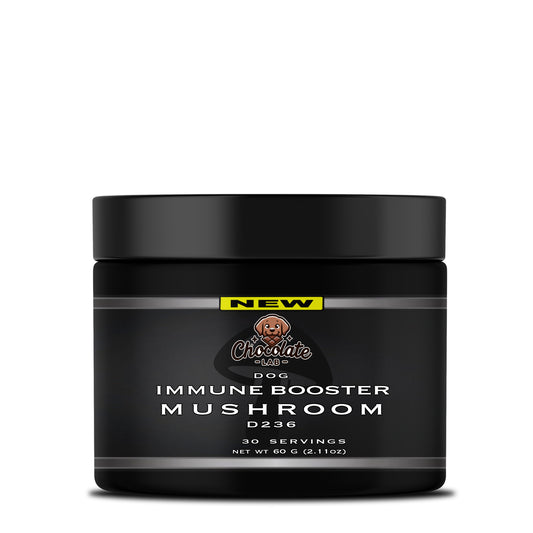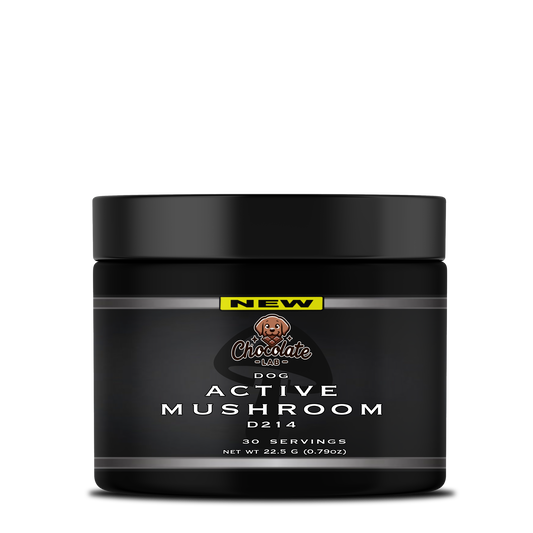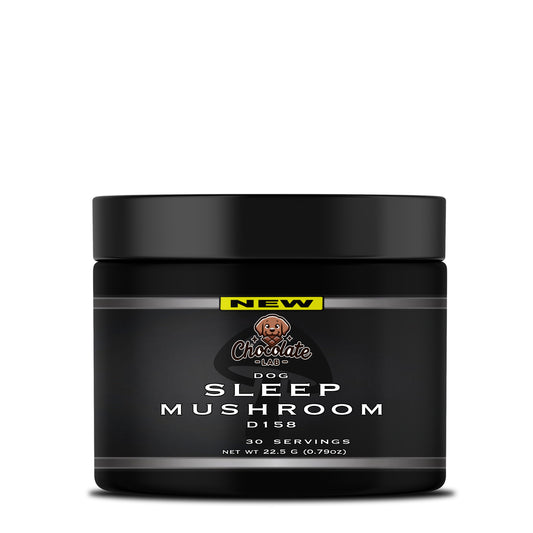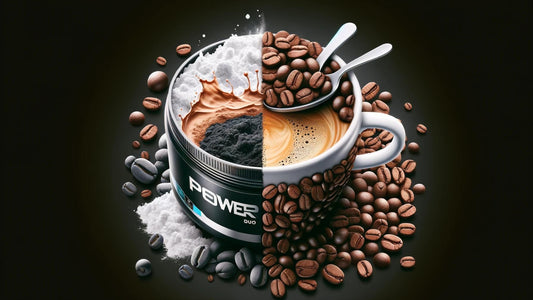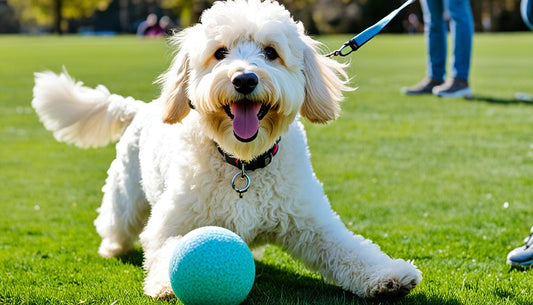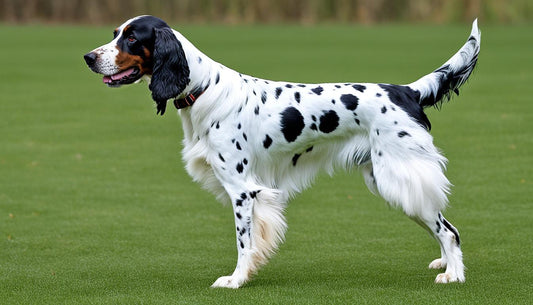The detailed Red Husky guide for 2024! Whether you're already a proud owner or considering welcoming one of these charismatic dogs into your life, this guide is your go-to resource. We'll explore every aspect of living with a Red Husky.
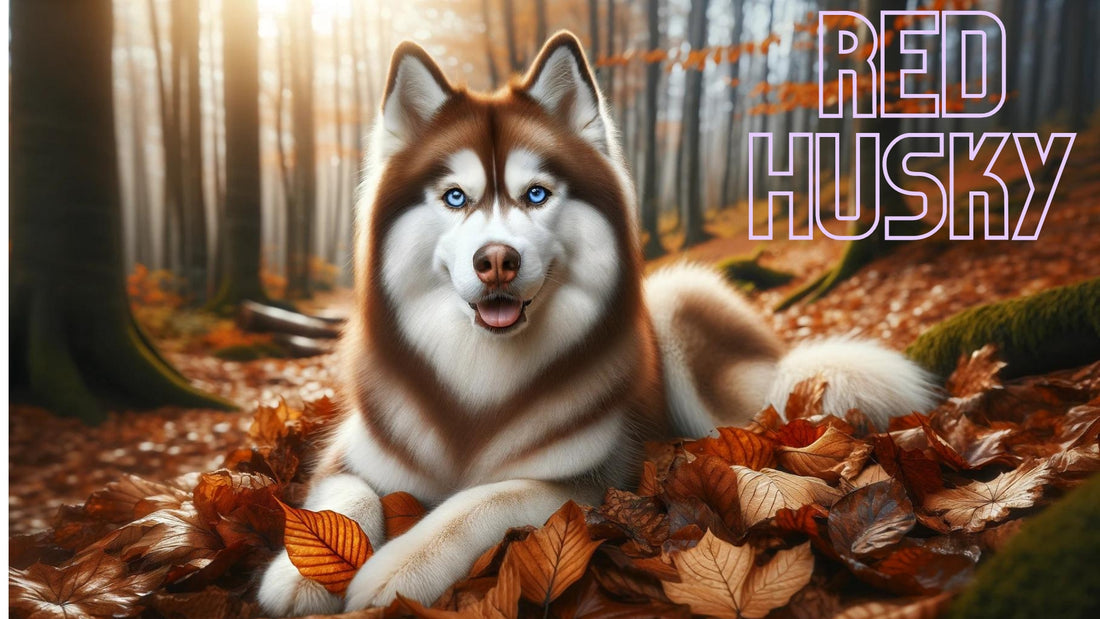
Red Husky - Dog Breed Information, Puppies & More
Share
Unveiling the Radiant World of Red Huskies: A Comprehensive Guide to Understanding the Charismatic Canine Companions
By Chocolate Lab
Published on 03/27/2024, 12:44 AM MST
Last Updated on 03/27/2024, 12:44 AM MST
Essential Facts About the Red Husky

| Key Term | Valuable Facts |
|---|---|
| Coat Color | Red Huskies feature a distinctive reddish or copper coat color, which can range from light cinnamon shades to deep, rich red. This unique coloration is a result of genetic variation within the Siberian Husky breed. |
| Eye Color | Red Huskies often have striking eye colors such as blue, brown, or heterochromia (two different colored eyes), which enhances their captivating appearance. |
| Breed Characteristics | They share common traits with standard Siberian Huskies, including a thick double coat, erect ears, and a bushy tail. This breed is known for its endurance and agility. |
| Temperament | Red Huskies are intelligent, energetic, and playful. They are known for their friendly nature and sociability, making them great companions and family pets. |
| Exercise Needs | They require ample exercise to maintain their health and happiness. Activities like running, hiking, or playing in a fenced yard are ideal for their active lifestyle. |
| Training | Early and consistent training is crucial due to their intelligence and independent nature. They respond well to positive reinforcement methods. |
| Climate Adaptation | Their thick coat makes them well-suited for cold climates, but they can adapt to warmer environments with proper care, such as access to shade and water. |
| Grooming Requirements | Regular grooming is essential to manage their shedding, especially during the spring and fall. Brushing a few times a week helps to keep their coat healthy and reduce loose fur. |
| Health Considerations | Generally healthy, but prone to certain genetic conditions like hip dysplasia and eye issues. Regular veterinary check-ups are important for early detection and treatment. |
| Lifespan and Size | Red Huskies typically have a lifespan of 12 to 14 years. They are a medium-sized breed, with males usually larger than females. |
Table of Content
- Understanding the Red Husky: An Introduction
- Origins and History of the Red Husky
- Physical Traits of the Red Husky
- Red Husky Temperament and Behavioral Traits
- Training and Exercise Requirements for Red Huskies
- Health Considerations and Lifespan of Red Huskies
- Grooming Needs and Care for Red Huskies
- Red Huskies in Family and Social Environments
- Gender Differences in Red Huskies
- Finding and Choosing Red Husky Puppies
- Unique Traits and Characteristics of Red Huskies
- Advantages and Challenges of Owning a Red Husky
- Cost Analysis of Owning a Red Husky
- Conclusion: The Distinct Charm of Red Huskies
- FAQs: Common Questions About Red Huskies Answered
Understanding the Red Husky: An Introduction
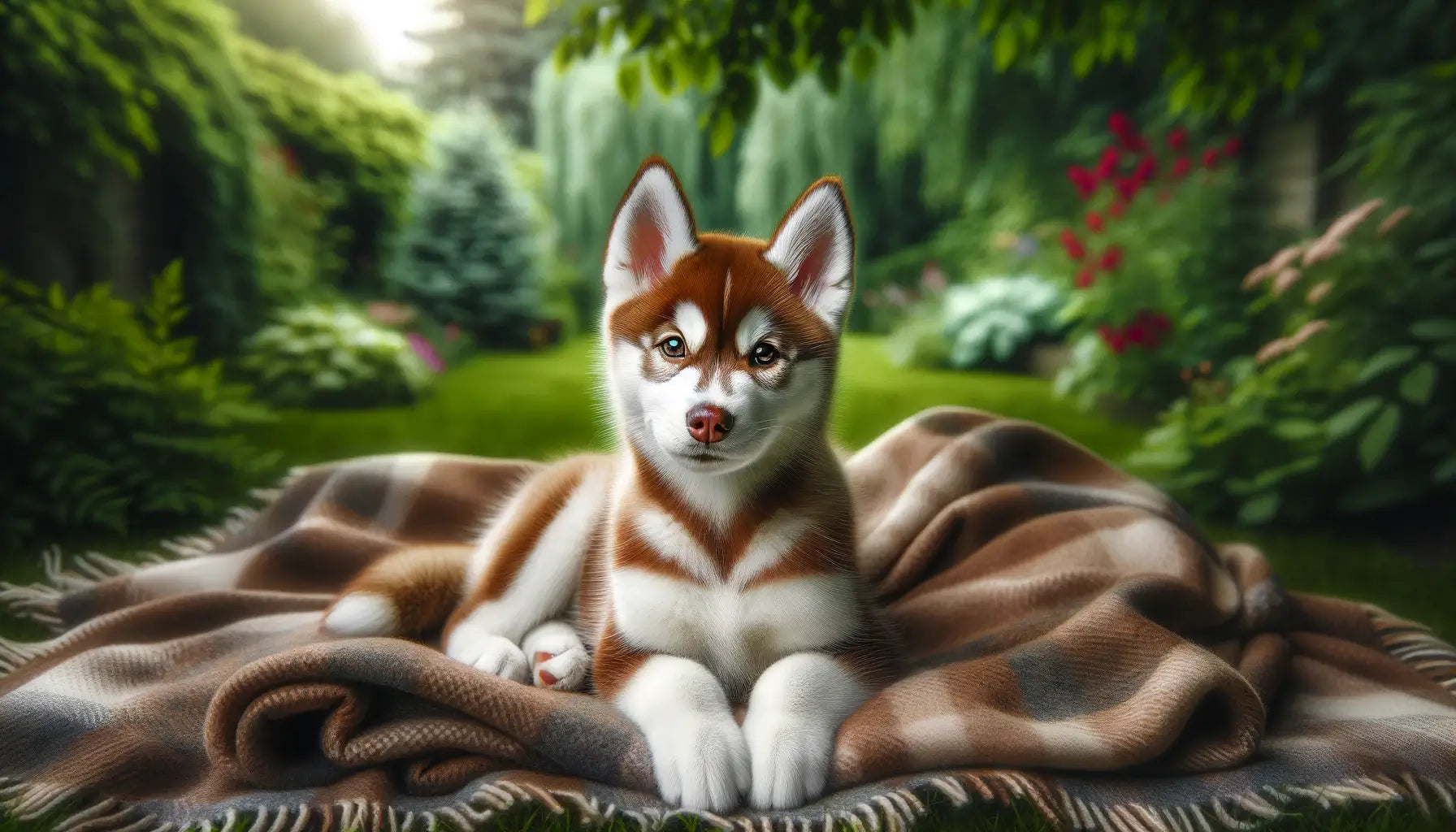
The Red Husky is a visually stunning variation of the Siberian Husky, capturing attention with its vibrant red coat and charismatic personality. This breed shares many of the Siberian Husky’s traits but stands out with its unique coloration, ranging from a light copper to a deep, rich red. Known for their striking blue or multi-colored eyes, Red Huskies turn heads wherever they go. These dogs are not just about looks; they are known for their friendly temperament, intelligence, and energetic nature, making them great companions for active individuals or families. Despite their similarity to the classic Siberian Husky, Red Huskies have their own distinct needs and characteristics. Their popularity has been on the rise, particularly among those who appreciate the Husky breed but desire a dog with a more unique appearance. As with any breed, potential owners should consider their lifestyle and environment, as Red Huskies are known for their high energy levels and need for regular exercise and mental stimulation.
Key Highlights of the Red Husky
- Defining the Red Husky: A unique variant of the Siberian Husky, known for its red coat.
- Characteristics: Notable for their eye-catching coat color and vibrant blue or heterochromatic eyes.
- Popularity: Increasingly sought after for their distinctive appearance and Husky traits.
Visual Comparison of Husky Varieties
| Feature | Red Husky | Traditional Siberian Husky |
|---|---|---|
| Coat Color | Ranges from light copper to deep red | Typically grey, black, or white |
| Eye Color | Often blue or multi-colored | Blue, brown, or heterochromatic |
| Temperament | Energetic, friendly, intelligent | Similar to Red Huskies |
Initial Considerations for Prospective Owners
- Exercise Needs: Red Huskies require considerable daily exercise.
- Space Requirements: Best suited for homes with ample outdoor space.
Origins and History of the Red Husky
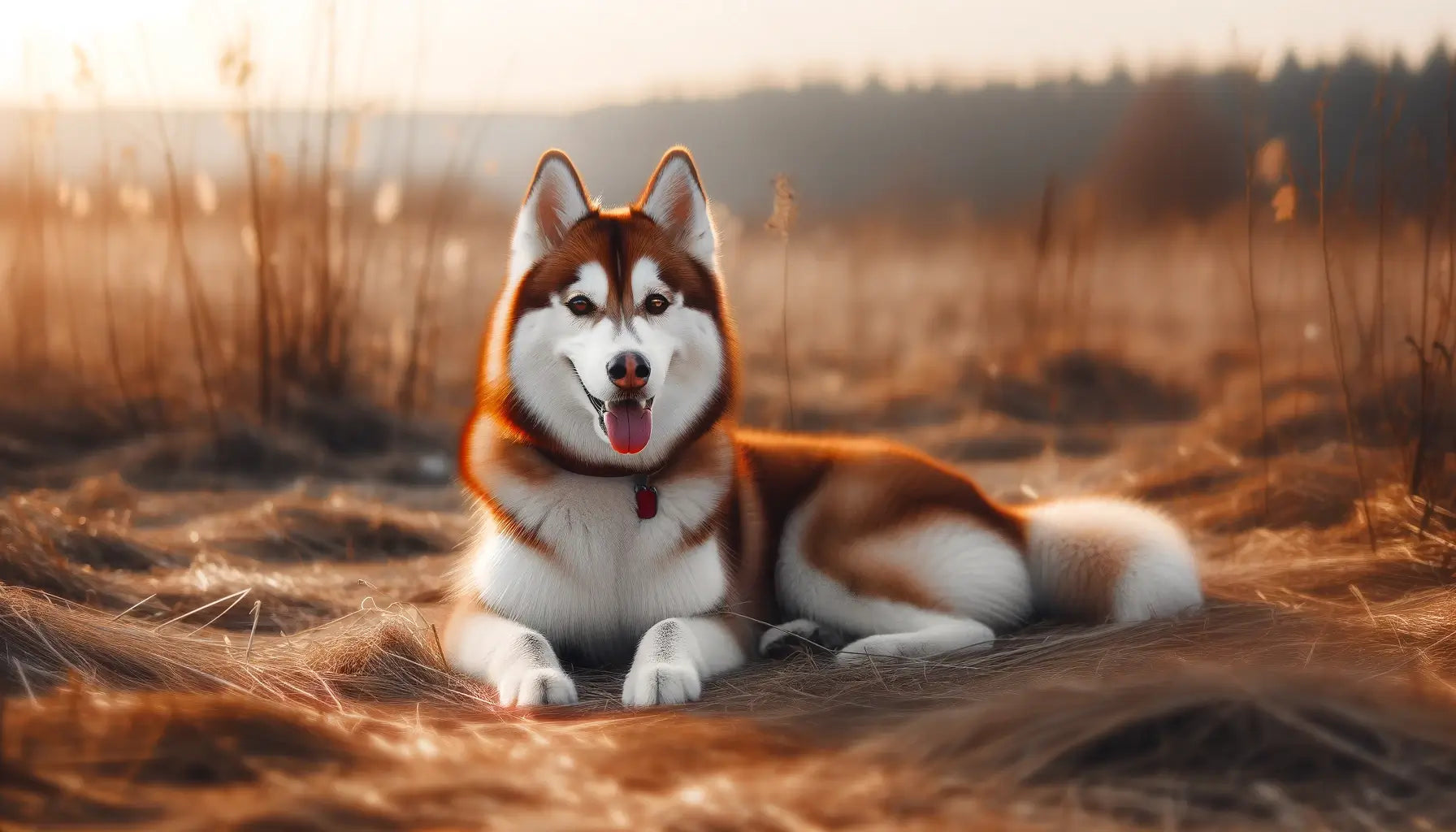
The Red Husky has a fascinating history that ties closely with the traditional Siberian Husky. Originating from the Siberian region, Huskies were initially bred by the Chukchi people, primarily as sled dogs. The Red Husky’s distinct coat color is a result of specific breeding practices, focusing on genetic traits that produce the vibrant red hue. This color variation, while not as common as the traditional grey or black Siberian Husky, has been present in the breed for generations. The red coat does not signify any difference in the dog’s working abilities or temperament. Over time, this striking coloration gained popularity, leading to a rise in selective breeding to maintain and enhance the red color. Today, the Red Husky is recognized and appreciated for its unique beauty and retains the same hardworking, resilient spirit of its Siberian ancestors.
Historical Background of the Red Husky
- Siberian Husky Origins: Originally bred by the Chukchi people in Siberia.
- Development of the Red Coat: A result of specific genetic traits.
- Current Recognition: Now widely recognized and appreciated for its unique color.
Timeline: The Evolution of the Red Husky
| Year | Event |
|---|---|
| Early 1900s | Siberian Huskies introduced to Alaska |
| Mid-1900s | Red Husky color variation begins to gain popularity |
| Present Day | Recognized and sought after for their unique appearance |
Quick Tips: Recognizing Authentic Red Husky Traits
- Coat Color: Look for the rich red hues typical of the breed.
- Heritage: Ensure they retain the key characteristics of Siberian Huskies.
Physical Traits of the Red Husky
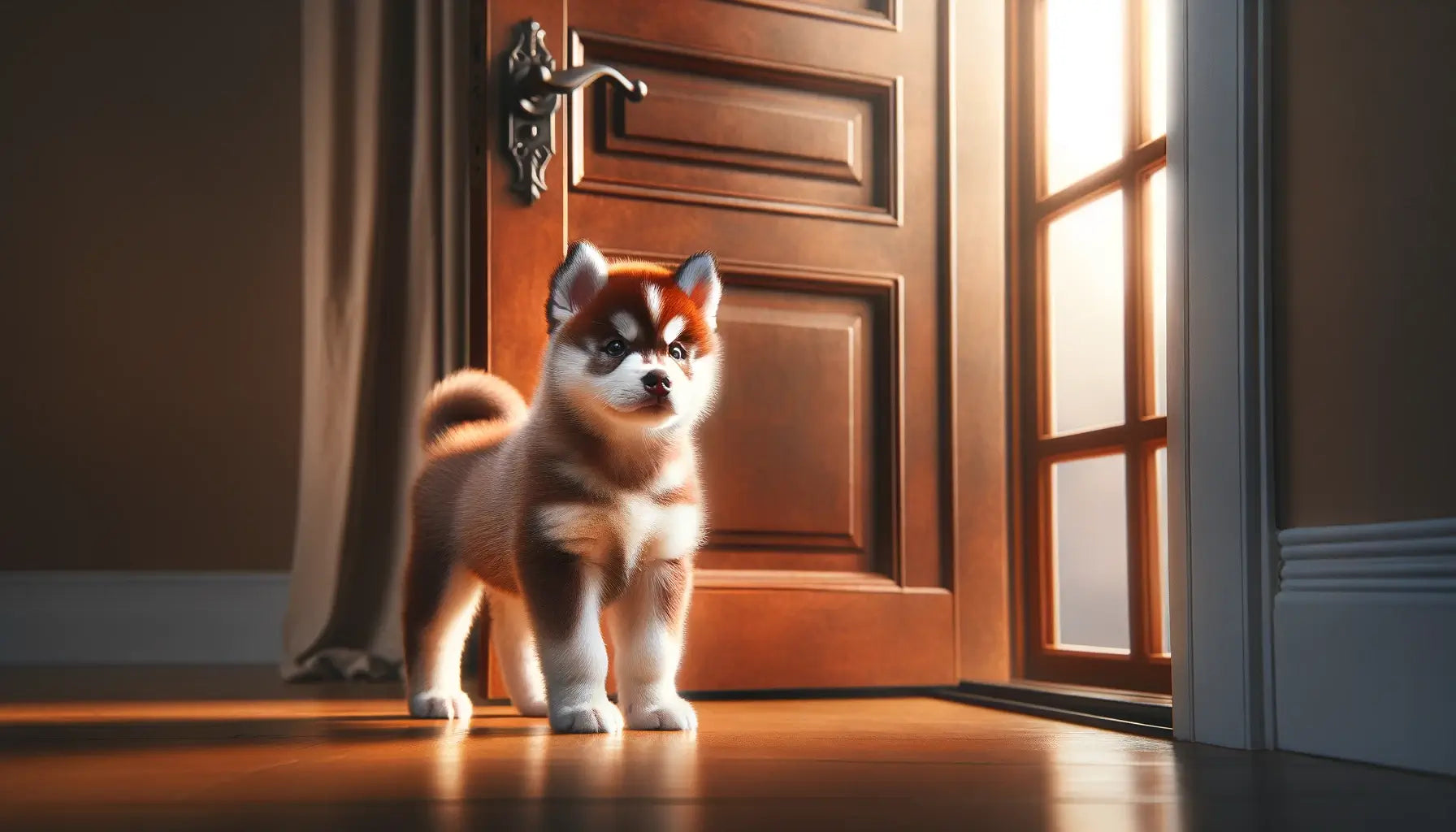
The physical traits of the Red Husky are similar to those of the standard Siberian Husky but with notable differences in coat color. These dogs typically have a medium build, well-suited to their original role as sled dogs. Their coat is dense and double-layered, providing insulation against cold weather, with the red color ranging from a bright copper to a dark, earthy hue. Eye color is another distinctive feature, with many Red Huskies boasting striking blue or heterochromatic eyes. They possess a wolf-like appearance with erect ears and a bushy tail that often curls over their back. Despite their robust and sturdy build, Red Huskies are known for their agility and grace. They typically weigh between 35 to 60 pounds, with males generally being larger and heavier than females. Understanding these physical traits is essential for potential owners, especially when considering the breed’s exercise and grooming needs.
Characteristic Features of the Red Husky
- Coat Color Variations: From bright copper to deep red.
- Typical Size and Weight: Medium build, weighing 35 to 60 pounds.
- Eye Color: Often blue or heter Ochromatic, adding to their striking appearance.
Guide to Red Husky Physical Attributes
| Attribute | Description |
|---|---|
| Coat Color | Ranges from light copper to deep red |
| Build | Medium, sturdy, and agile |
| Eye Color | Commonly blue or heterochromatic |
Quick Tips: Identifying a Red Husky
- Inspect the Coat: The red color should be vibrant and consistent.
- Observe the Build: Look for the medium, athletic build characteristic of Huskies.
Red Husky Temperament and Behavioral Traits

Red Huskies are known for their lively and friendly temperament, making them excellent companions. They share many behavioral traits with the Siberian Husky, including high energy levels, intelligence, and a playful nature. Red Huskies are typically very sociable, enjoying the company of humans and other dogs. They are known for their affectionate demeanor, often forming strong bonds with their family members. However, their intelligence and independent streak can sometimes lead to stubbornness, making consistent training essential. These dogs are often vocal, using howls and barks to communicate, which can be charming to some but challenging for others. They are generally good with children, making them suitable for family life, but their high energy levels mean they do best in active households. Understanding and catering to their behavioral needs are crucial for a harmonious relationship with a Red Husky.
Behavioral Aspects of the Red Husky
- Sociability and Playfulness: Enjoy interaction with people and other dogs.
- Intelligence and Training: Smart but can be independent and stubborn.
- Family Compatibility: Generally good with children and make excellent family pets.
Behavioral Comparison Chart
| Trait | Red Husky | Traditional Siberian Husky |
|---|---|---|
| Sociability | High | High |
| Energy Levels | High | High |
| Trainability | Moderate | Moderate |
| Vocalization | Often vocal | Often vocal |
Quick Tips: Fostering Positive Behavior in Red Huskies
- Encourage Socialization: Introduce them to various environments and people.
- Regular Exercise: Essential to manage their high energy levels.
Training and Exercise Requirements for Red Huskies
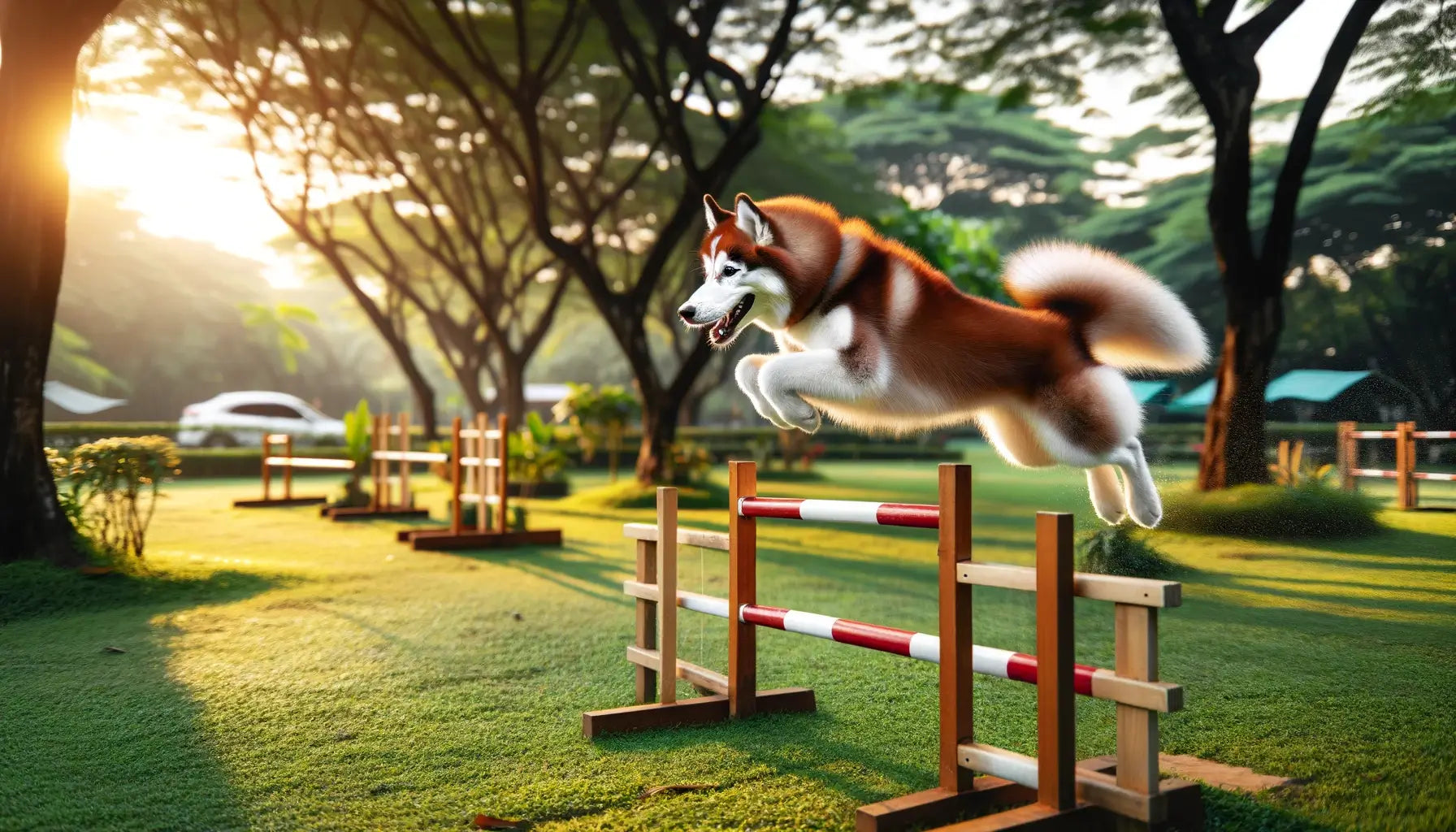
Training and exercise are crucial for the well-being of a Red Husky. Due to their high energy levels and intelligence, they require both physical exercise and mental stimulation to stay healthy and happy. A lack of adequate exercise can lead to undesirable behaviors such as excessive barking, digging, or escape attempts. Training should be consistent and start early, utilizing positive reinforcement techniques. Red Huskies excel in activities like agility, hiking, and fetch, which not only provide physical outlets but also strengthen the bond between dog and owner. Mental stimulation can be provided through puzzle toys, training games, and new experiences. It’s important to establish a routine that includes both exercise and training, tailored to the individual dog’s needs and energy levels. A well-exercised and trained Red Husky is typically a well-behaved and content companion.
Effective Training and Exercise Practices
- Training Methods: Positive reinforcement and patience are key.
- Exercise Needs: Require substantial daily exercise and activities.
- Mental Stimulation: Essential to keep their intelligent minds engaged.
Training and Exercise Regimen for Red Huskies
| Activity Type | Purpose | Frequency | Duration | Suitable Age | Tips | Outdoor/Indoor | Equipment Needed |
|---|---|---|---|---|---|---|---|
| Daily Walks | Cardiovascular health | Daily | 30-60 min | All ages | Use a harness for better control | Outdoor | Leash, harness |
| Agility Training | Mental stimulation, agility | 2-3 times/week | 20-30 min | >6 months | Start with basic obstacles | Outdoor | Agility set |
| Interactive Play | Bonding, mental engagement | Daily | 15-30 min | All ages | Vary toys to maintain interest | Indoor/Outdoor | Toys, balls |
| Puzzle Games | Mental stimulation | Daily | 15-20 min | All ages | Rotate puzzles to prevent boredom | Indoor | Puzzle toys |
| Obedience Training | Behavioral discipline | 3-4 times/week | 15-20 min | >8 weeks | Consistency and positive reinforcement | Indoor/Outdoor | Treats, clicker |
| Hiking | Endurance, exploration | Weekly | 1-2 hours | >1 year | Ensure safety and hydration | Outdoor | Leash, water bottle |
Quick Tips: Engaging a Red Husky in Exercise
- Diverse Activities: Include a variety of physical and mental exercises.
- Consistent Routine: Establish and maintain a regular exercise schedule.
Health Considerations and Lifespan of Red Huskies

Red Huskies, like all breeds, have specific health considerations that prospective and current owners should be aware of. Generally robust and healthy, they have a lifespan typically ranging from 12 to 15 years. However, they are prone to certain health issues common in Siberian Huskies, such as hip dysplasia, eye conditions like cataracts, and skin problems. Regular veterinary check-ups are crucial for early detection and management of these issues. A balanced diet, regular exercise, and mental stimulation significantly contribute to their overall health and longevity. Genetic predispositions in Red Huskies make it essential for potential owners to seek health clearances from breeders. Understanding these health considerations is vital for providing a nurturing and preventive care environment, ensuring a long, healthy life for a Red Husky.
Common Health Issues in Red Huskies
- Typical Health Concerns: Hip dysplasia, eye conditions, and skin problems.
- Lifespan Influences: Genetics, diet, and exercise impact their lifespan.
Health Risk Comparison Among Husky Varieties
| Health Issue | Red Husky | Traditional Siberian Husky |
|---|---|---|
| Hip Dysplasia | Moderate risk | Moderate risk |
| Eye Conditions | Common | Common |
| Skin Problems | Less common | Less common |
Quick Tips: Ensuring Good Health in Red Huskies
- Regular Vet Visits: Essential for monitoring health.
- Balanced Diet and Exercise: Key to maintaining overall health.
Grooming Needs and Care for Red Huskies
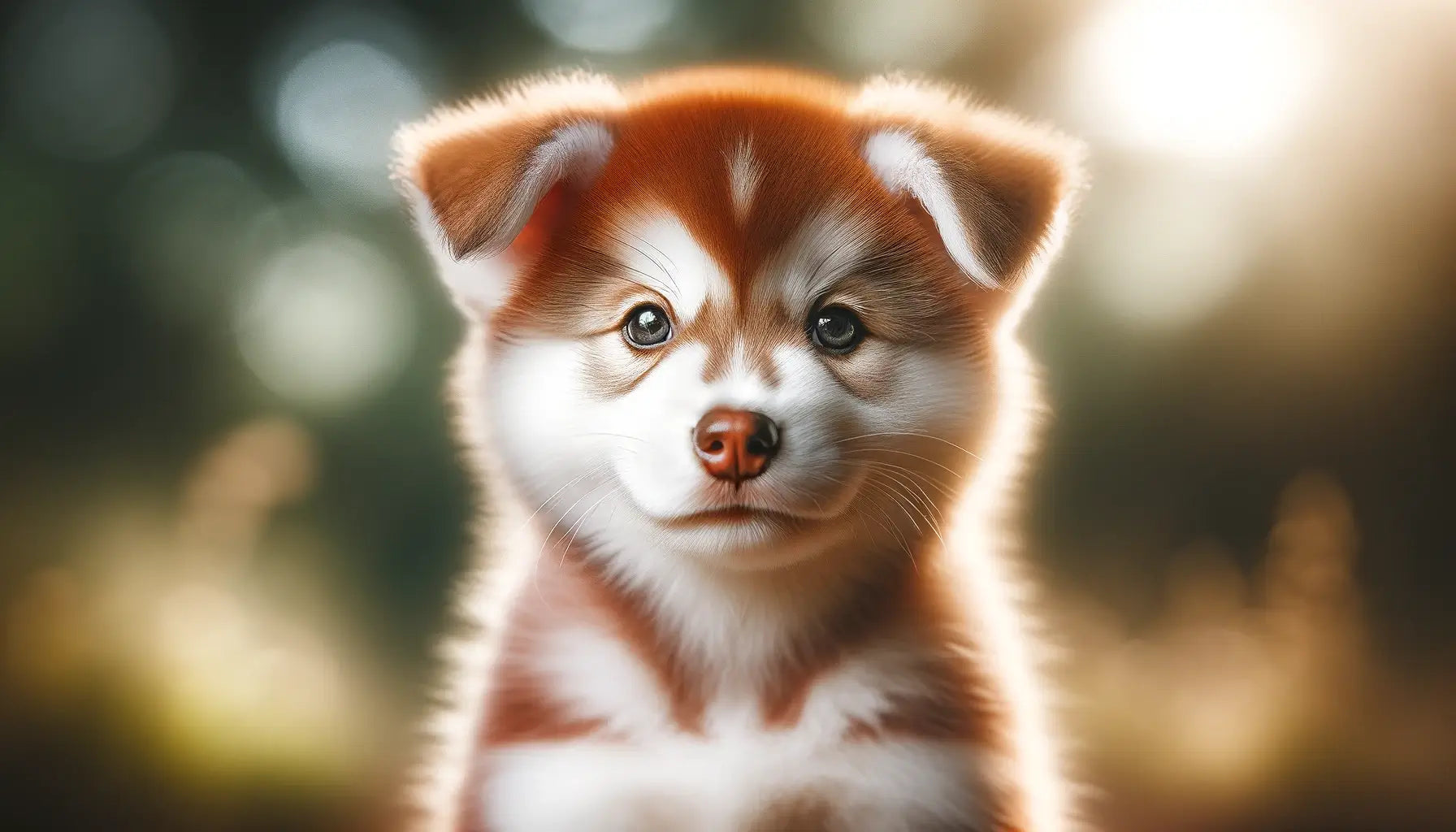
Grooming is an essential aspect of caring for a Red Husky, particularly due to their thick double coat. This breed sheds heavily, especially during seasonal changes, requiring regular brushing to manage shedding and maintain coat health. Bathing should be done as needed, but not too frequently, to preserve the natural oils in their coat. Red Huskies also require basic grooming care like nail trimming, ear cleaning, and dental care. Their diet plays a crucial role in the health of their coat and overall well-being, so it’s important to provide them with high-quality, nutritious food. Regular check-ups with a veterinarian are vital to ensure they are in good health, and vaccinations and parasite control are up-to-date. Consistent grooming and care routines not only keep Red Huskies looking their best but also provide opportunities to check for any signs of health issues.
Essentials in Grooming and Nutrition
- Coat Care: Regular brushing to manage shedding.
- Nutritional Needs: High-quality diet for coat and overall health.
Grooming Schedule and Requirements for Red Huskies
| Grooming Task | Frequency | Duration | Purpose | Tools Required | Tips | Age to Start | Importance |
|---|---|---|---|---|---|---|---|
| Brushing | 2-3 times/week | 15-20 min | Prevent matting, reduce shedding | Grooming brush, de-shedding tool | Be gentle to avoid skin irritation | 8 weeks | High |
| Bathing | Monthly | 30-45 min | Maintain coat health | Dog shampoo, towels | Use lukewarm water, thoroughly rinse | 12 weeks | Moderate |
| Nail Trimming | Monthly | 10-15 min | Prevent overgrowth | Nail clippers, styptic powder | Avoid cutting the quick | 8 weeks | High |
| Ear Cleaning | Bi-weekly | 5-10 min | Prevent infections | Ear cleaner, cotton balls | Be gentle, avoid deep insertion | 8 weeks | High |
| Dental Care | Daily | 5-10 min | Oral health | Dog toothbrush, toothpaste | Introduce gradually | 8 weeks | High |
Quick Tips: Effective Grooming and Care
- Consistent Brushing: Helps in managing shedding and coat health.
- Nutritional Balance: Choose a diet that supports coat and general health.
Red Huskies in Family and Social Environments

Red Huskies are known for their sociable and friendly nature, making them well-suited for family environments. They typically enjoy being around people and are known to be good with children, often displaying patience and playfulness. However, due to their high energy and strength, supervision is recommended when they interact with young children. Red Huskies can get along well with other pets, especially if raised together, but their strong prey drive means they should be socialized early to coexist peacefully with smaller animals. They thrive in an environment where they can be part of the family activities, needing attention and engagement to prevent boredom and loneliness. Socialization and training are key in helping them adapt to different social settings and ensuring they are well-behaved around guests and in public settings.
Family Integration and Social Behavior
- Suitability for Families: Great companions for active families.
- Interaction with Children: Playful but should be supervised.
Compatibility Rating in Family Settings
| Setting | Compatibility |
|---|---|
| With Children | High |
| With Other Pets | Moderate to high |
| In Social Gatherings | High |
Quick Tips: Integrating Red Huskies into the Family
- Supervised Interactions: Especially important with young children.
- Inclusion in Family Activities: Keeps them engaged and happy.
Gender Differences in Red Huskies

Understanding the gender differences in Red Huskies can be important for potential owners. Generally, male Red Huskies tend to be slightly larger and may exhibit more dominant behaviors compared to females. Females, on the other hand, might be more independent and reserved. These behavioral tendencies, however, are greatly influenced by individual personality, training, and socialization rather than gender alone. Both males and females are equally capable of forming strong bonds with their families and being trained effectively. When it comes to breeding, health considerations such as spaying or neutering come into play, impacting behavior and potentially reducing certain health risks. Choosing between a male or female Red Husky should be based on the owner’s personal preference, lifestyle, and the ability to meet the dog’s needs.
Comparative Analysis: Male vs. Female Red Huskies
- Behavioral Differences: Males may be more dominant, females more independent.
- Physical Size and Appearance: Males are generally larger.
Side-by-Side Gender Comparison
| Gender | Behavior | Size |
|---|---|---|
| Male | More dominant | Larger |
| Female | More independent | Smaller |
Quick Tips: Selecting Between Male and Female Red Huskies
- Consider Personal Preference: Choose based on compatibility with your lifestyle.
- Understand Individual Personalities: Behavior varies more by individual than by gender.
Finding and Choosing Red Husky Puppies

When it comes to finding and choosing Red Husky puppies, it is crucial to research and select a responsible breeder or consider adoption from a rescue. A reputable breeder should prioritize the health, temperament, and well-being of their dogs and be transparent about their breeding practices. Visiting the breeding facility and meeting the puppy’s parents can provide insights into the puppy’s future health and temperament. Look for signs of good health, such as clear eyes, clean fur, and a playful demeanor. Be wary of breeders who seem to prioritize profit over the well-being of their dogs or show signs of unethical practices. Adoption can be a rewarding option, offering a loving home to a dog in need. Whether buying or adopting, ensuring the puppy is healthy, well-socialized, and a good fit for your home is paramount.
Guidelines for Selecting a Red Husky Puppy
- Reputable Breeders and Rescue Centers: Choose with care and responsibility.
- Signs of a Healthy Puppy: Clear eyes, clean fur, and playful behavior.
- Necessary Health Checks: Up-to-date vaccinations and health clearances.
Checklist for Evaluating Red Husky Breeders and Puppies
| Criteria | Importance |
|---|---|
| Breeder’s Reputation | High |
| Puppy’s Health | High |
| Socialization | Moderate |
Quick Tips: Choosing a Red Husky Puppy
- Visit the Breeder or Rescue: Gauge the environment and care given.
- Health and Temperament: Ensure the puppy is healthy and well-tempered.
- Match with Lifestyle: Consider how the puppy will fit into your home and routine.
Unique Traits and Characteristics of Red Huskies
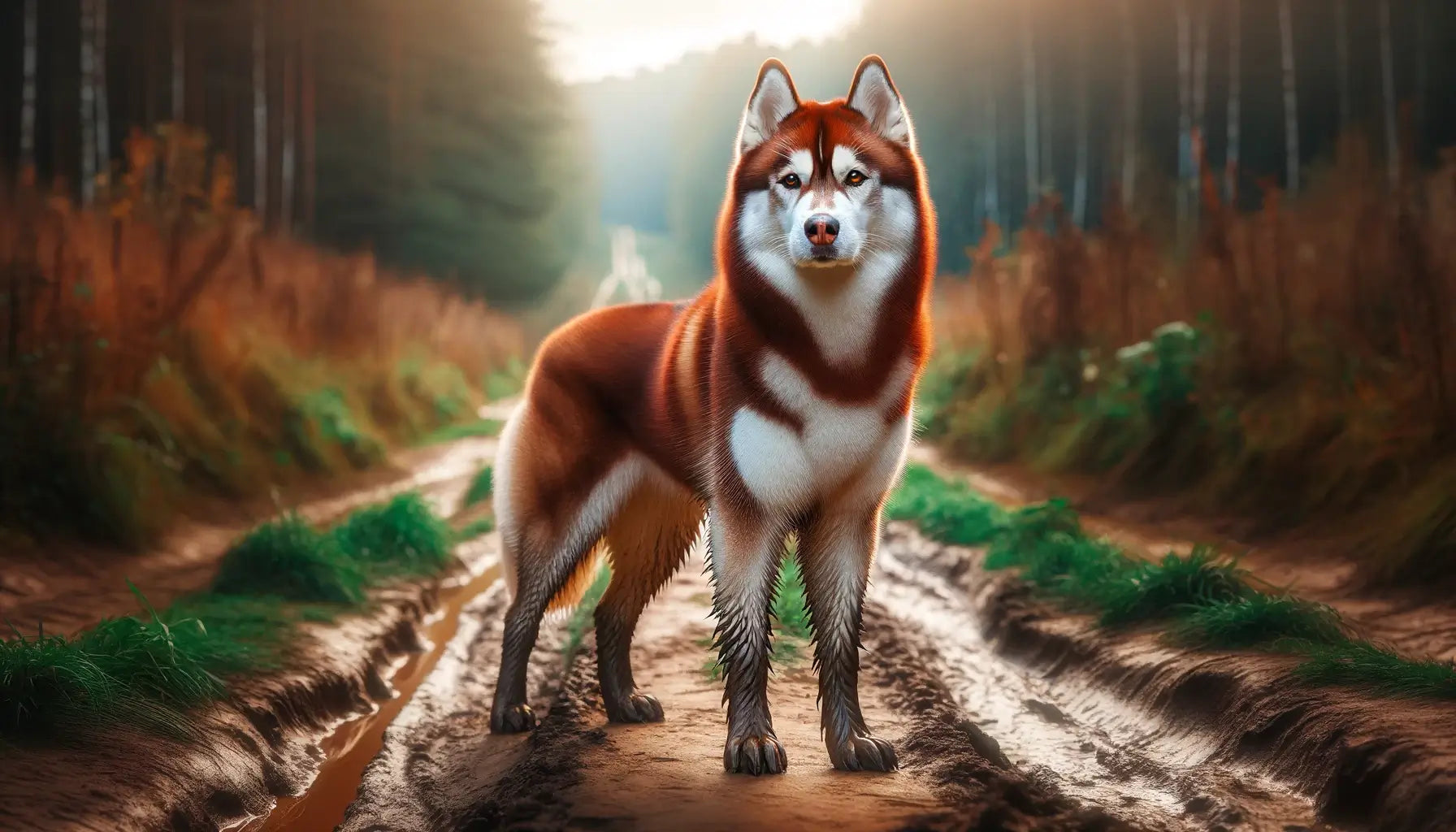
Red Huskies are not just another color variant of the Siberian Husky; they possess unique traits that set them apart. Known for their stunning red coat, which ranges from a deep mahogany to a bright copper hue, they make a striking visual statement. This coat color is relatively rare and highly sought after, making Red Huskies stand out in any crowd. Their eye color, often bright blue or heterochromatic, adds to their allure. These dogs are admired not just for their appearance but also for their vibrant personality and intelligence. They share the Siberian Husky’s love for adventure and are equally adept at activities like sledding, hiking, and agility sports. The combination of their distinctive looks and spirited nature makes Red Huskies a favorite among dog enthusiasts who seek a companion that is both beautiful and full of life.
Distinctive Features of Red Huskies
- Unique Coat Color: The red hue is rare and visually striking.
- Eye Color Variations: Often blue or heterochromatic, adding to their appeal.
Summary of Red Husky Characteristics
| Characteristic | Description |
|---|---|
| Coat Color | Ranges from deep mahogany to bright copper |
| Personality | Energetic, intelligent, and playful |
| Eye Color | Typically blue or multi-colored |
Quick Tips: Appreciating Red Husky Uniqueness
- Observe the Coat Color: The unique red hue is a key identifying feature.
- Engage in Activities: Their energetic nature thrives in active settings.
Advantages and Challenges of Owning a Red Husky

Owning a Red Husky comes with its own set of advantages and challenges. These dogs are known for their loyal and friendly nature, making them excellent companions and family pets. Their stunning appearance and unique coat color make them one of the most photogenic breeds, perfect for those who love to showcase their pets. However, Red Huskies are also known for their high energy levels and need for regular exercise, which can be a challenge for less active owners. They are intelligent and independent, which can sometimes translate to stubbornness in training. Their thick coats require regular grooming, especially during shedding seasons. Prospective owners should consider these factors carefully to ensure they can provide a suitable home that meets the needs of a Red Husky.
Pros and Cons of Red Husky Ownership
- Companionship: Loyal and affectionate, making great family pets.
- Challenges: High energy and grooming needs.
Comparative Table of Ownership Considerations
| Consideration | Advantage | Challenge |
|---|---|---|
| Companionship | Affectionate and loyal | Requires sufficient attention |
| Exercise Needs | Active and playful | Requires regular, vigorous exercise |
| Grooming | Stunning coat | Requires regular, thorough grooming |
Quick Tips: Managing Red Husky Ownership
- Exercise Regularly: Plan for daily physical activities.
- Grooming Routine: Establish a consistent grooming schedule.
Cost Analysis of Owning a Red Husky
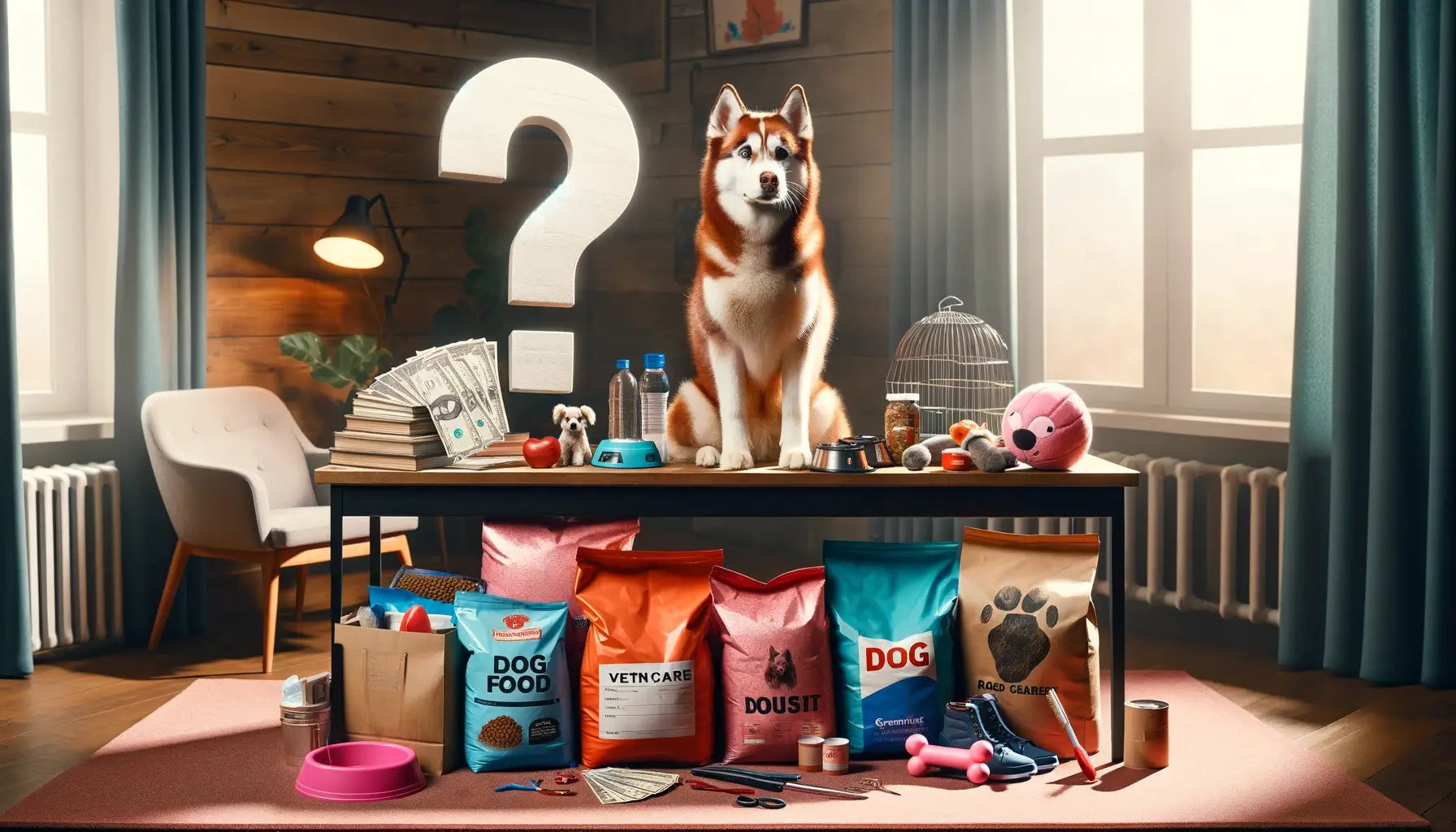
The cost of owning a Red Husky can vary significantly and includes initial expenses, ongoing costs, and potential emergency expenses. Initially, prospective owners will need to consider the purchase price or adoption fee, which can be higher for Red Huskies due to their rarity. Ongoing costs include food, grooming supplies, routine veterinary care, and possibly pet insurance. Red Huskies, like all pets, may also incur unforeseen expenses such as emergency medical care or specialized training. Budgeting for these expenses is essential to ensure that the dog receives the care it needs throughout its life. Owners should also consider costs for accessories like collars, leashes, and beds, as well as any travel-related expenses if the dog accompanies them on trips.
Cost Analysis for Red Husky Ownership
| Expense Type | Initial Cost ($) | Monthly Cost ($) | Annual Cost ($) | Purpose | Frequency of Replacement | Age to Start |
|---|---|---|---|---|---|---|
| Purchase/Adoption | 500 – 1500 | - | - | Acquiring the dog | One-time | At purchase |
| Food | 50 – 100 | 50 – 100 | 600 – 1200 | Nutrition | Monthly | 8 weeks |
| Grooming Supplies | 50 – 100 | 10 – 20 | 120 – 240 | Coat care | Bi-annually | 8 weeks |
| Veterinary Care | 100 – 300 | 20 – 40 | 240 – 480 | Health check-ups and shots | Annually | 8 weeks |
| Training Classes | 50 – 200/session | 40 – 80 | 480 – 960 | Behavioral training | Monthly (if enrolled) | 10 weeks |
| Toys and Accessories | 100 – 200 | 10 – 20 | 120 – 240 | Entertainment, exercise | Quarterly | 8 weeks |
| Insurance | - | 30 – 50 | 360 – 600 | Health emergencies | Monthly | At purchase |
| Emergency Fund | - | - | 200 – 500 | Unforeseen expenses | As needed | At purchase |
| Miscellaneous Expenses | 50 – 100 | 10 – 20 | 120 – 240 | Bedding, leashes, etc. | As needed | At purchase |
Quick Tips: Budgeting for a Red Husky
- Plan for Initial Costs: Save for the purchase and initial setup.
- Monthly Budgeting: Allocate funds for regular expenses like food and grooming.
Conclusion: The Distinct Charm of Red Huskies

In conclusion, the Red Husky is a breed that combines stunning beauty with a lively and affectionate personality. These dogs are more than just their eye-catching appearance; they are intelligent, energetic, and loyal companions. Their unique coat color, friendly nature, and adaptability make them a wonderful choice for families and individuals alike. However, potential owners should be prepared for their high energy levels, exercise needs, and grooming requirements. Owning a Red Husky is a commitment that comes with its own set of challenges, but for many, the joy and companionship they offer far outweigh the effort. If you are considering bringing a Red Husky into your life, ensure that you are ready to provide the care, exercise, and love they need to thrive.
Recap of Red Husky Ownership
- Companionship: Loyal, affectionate, and family-friendly.
- Unique Appeal: Striking appearance and playful nature.
Summary of Key Points Discussed
| Aspect | Summary |
|---|---|
| Appearance | Unique red coat and striking eyes |
| Temperament | Friendly, intelligent, energetic |
| Care Needs | Regular exercise and grooming |
Quick Tips: Final Considerations for Red Husky Prospective Owners
- Assess Compatibility: Make sure your lifestyle matches their needs.
- Training and Exercise: Plan for consistent training and daily exercise.
- Grooming Routine: Be prepared for regular grooming sessions.
FAQs: Common Questions About Red Huskies Answered
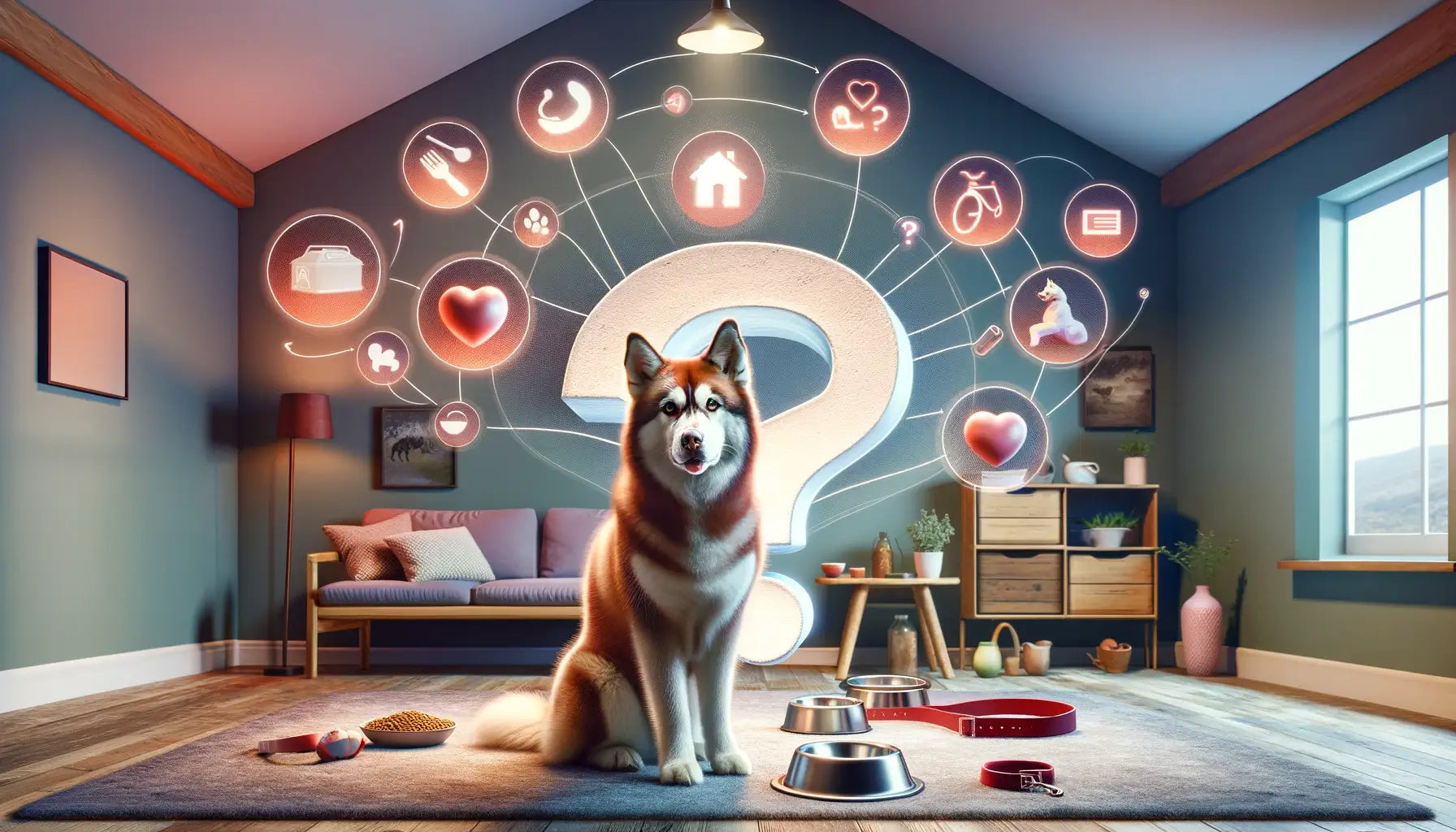
Frequently Asked Questions About Red Huskies
| Question | Answer |
|---|---|
| What distinguishes a Red Husky from other Husky colors? | A Red Husky is characterized by its unique red coat color, ranging from a deep mahogany to a bright copper hue. |
| How much exercise does a Red Husky require? | A Red Husky needs substantial daily exercise, including walks, playtime, and mental stimulation, due to its high energy levels. |
| Are Red Huskies suitable for first-time dog owners? | Red Huskies can be challenging for first-time owners due to their high energy, intelligence, and need for consistent training. |
| What are common health issues in Red Huskies? | Common health issues in Red Huskies include hip dysplasia, eye conditions like cataracts, and skin allergies. |
| Can Red Huskies adapt well to living in hot climates? | Red Huskies can adapt to warmer climates but require precautions like shade, hydration, and limited exercise during peak heat. |
| How do Red Huskies interact with other pets? | Red Huskies are generally sociable with other pets, especially when socialized from a young age, but their prey drive should be monitored. |
| What is the lifespan of a Red Husky? | The average lifespan of a Red Husky is around 12 to 15 years, depending on their overall health and care. |
| Do Red Huskies require a lot of grooming? | Yes, Red Huskies require regular grooming due to their thick double coat, especially during shedding seasons. |
| Are Red Huskies known for being vocal? | Yes, Red Huskies are often vocal, using howls and barks to communicate, which is a trait common in the Husky breed. |
| How does the temperament of a Red Husky compare to other Huskies? | The temperament of a Red Husky is similar to other Huskies, being friendly, energetic, and intelligent. |
| Is it difficult to train a Red Husky? | Training a Red Husky can be challenging due to their intelligence and independent nature, but they respond well to positive reinforcement. |
| What should potential owners consider before getting a Red Husky? | Potential owners should consider the Red Husky’s exercise needs, grooming requirements, and the need for consistent training and socialization. |
| Can Red Huskies live comfortably in an apartment setting? | Red Huskies can live in apartments if they receive enough exercise and mental stimulation, but they thrive in homes with more space. |
| What type of diet is best for a Red Husky? | A balanced diet suited to their age, size, and activity level is recommended for a Red Husky, and it’s best to consult with a vet for specific dietary needs. |
| Are Red Huskies good family pets? | Yes, Red Huskies can be excellent family pets due to their affectionate nature and playfulness, but they need an active household. |


